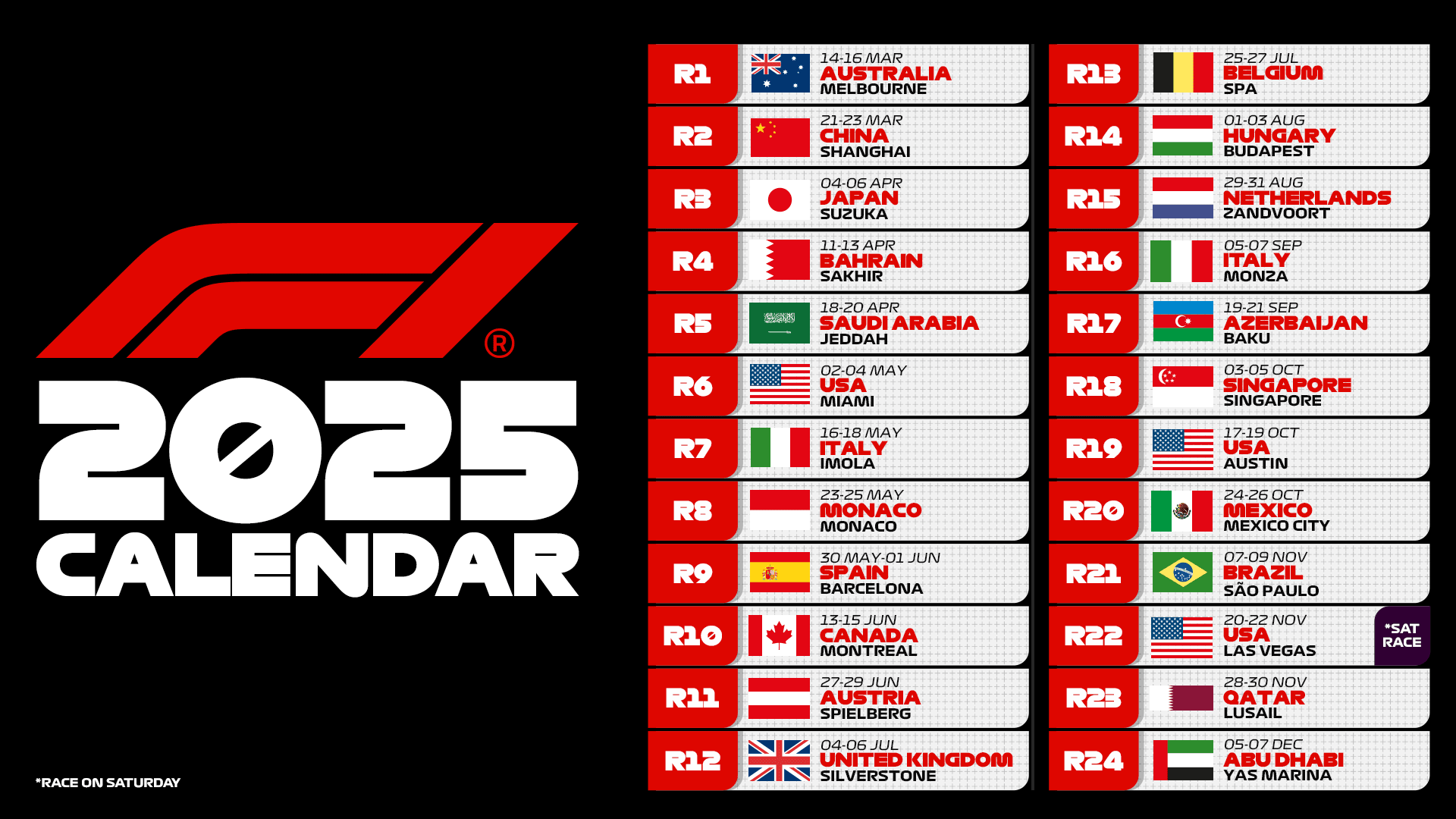
All the leading teams, including Ferrari, decided to start the 2024 Formula 1 British Grand Prix with the medium tire at the 5.891-kilometre Silverstone Circuit. It was known that the race would have moments of rain, so it was necessary to use a tire that could extend the stint. We note that basically everyone had at least one new medium and one new hard tire. None of the drivers who made it to Q3 had a new soft tire.
In the first laps, they maintained their positions, with the two Mercedes cars immediately managing to make the medium tire work very well. They built a significant gap in the first 14 laps, about 4.5 seconds. Max Verstappen at that moment had several problems with the front end, indicating that the understeer seen yesterday in the qualifying session was not only due to damage to his Red Bull RB20 floor.
The Dutchman spoke to the team at that moment, letting them know that the front was overloaded, and shortly after he complained that he couldn’t get the front axle to work. The pit wall gave him some setup advice to try to get the front end to work better. Lando Norris’ McLaren was then able to close the gap on the number 1 RB20.
During these laps, one of the main discussions on the team radios was about the rain. Updates were coming in constantly. For everyone, the issue was simple: avoid the pit stop until the rain arrived, so the tires had to be preserved.
According to some teams, the rain was expected to come from turns 15 and 16. We are speaking also of Ferrari: Charles Leclerc on the medium tire caught up, getting close to his Maranello teammate after starting from P11. Both Ferrari drivers did a good job of managing the yellow tire. Only at turn 11 were some instructions given to try to preserve the tire more.
When the rain arrived, strategists and drivers, including the Ferrari ones, had to nail the best moment to make the stop and possibly switch to intermediates, also because the shower was expected to be short, allowing the track to dry quickly. According to the weather forecasts, the rain was expected to return about 10 minutes later. The drivers therefore stayed on track for several laps with the medium tire on a damp surface.
The first to try something different was Charles Leclerc, who on the twentieth lap stopped to attempt the gamble of the intermediate tire. From the start, Ferrari realized that the tire wasn’t working, but it was largely a decision driven by the Monegasque driver’s desire. After the initial shower, they expected another period of rain later in the race. Ferrari did not make the right decision, but at that point, they had to try to keep the wet tire alive, without ruining it too much, to avoid a second pit stop when the rain returned.
Show your support for Scuderia Ferrari with official merchandise collection! Click here to enter the F1 online Store and shop securely! And also get your F1 tickets for every race with VIP hospitality and unparalleled insider access. Click here for the best offers to support Charles and Lewis from the track!
From the gap chart and the telemetry data, the ineffectiveness of Charles Leclerc’s Ferrari pit stop is clearly visible. As soon as he stopped, he started losing a lot of race time, completely ruining his chances of scoring some points in the British Grand Prix. In the rain, Max Verstappen’s car was not working at all. With a damp track and an unbalanced car, they couldn’t do much until the first stop.
There is indeed a noticeable gap between the Dutchman and the two McLaren cars at this stage of the race, as well as the two Mercedes single-seaters. They were really struggling on the mediums. In the rain, there was also a clear change in the leadership trend. Notice the switch in the race lead between Mercedes and McLaren. It was all a matter of tires and how they worked lap by lap.
The rain returned on lap 26. Max Verstappen struggled greatly and therefore stopped on the next lap to switch to intermediates. On his RB20, they also increased the front wing angle by 4 clicks. A very important adjustment to try to limit the understeer that the world champion was experiencing. Red Bull made a very good strategic decision, anticipating the leaders by just one lap and effectively making a very powerful undercut. The Dutchman came out less than 4 seconds behind Lewis Hamilton, who was in third place at that time.
On the following lap, the Mercedes cars and Lando Norris also pitted. Oscar Piastri had to wait one more lap, which damaged his race. The Silver Arrows made a double pit stop. However, the relative gap between the two drivers to implement this tactic was not sufficient. Because of this, George Russell lost the position to Max Verstappen.
Once the intermediate tire was fitted, everyone realized that it degraded very quickly. The wear was mostly thermal, so everyone looked for puddles to cool it down. The front tire was the main limit. For this reason, Ferrari told Carlos Sainz to load the first axle less in turns 11 and 15. Overall, everyone tried to take care of the front tire by varying the settings of the various tools on the steering wheel.
Once the rain stopped, the first to return to slick tires was Lewis Hamilton. With his engineer, the seven-time Formula 1 world champion decided that the front tires had reached the crossover point. They pitted on lap 38 to switch to the soft tire. It was the right choice, as it had a very quick activation and there were relatively few laps left to the finish (13).
The lap following the pit stop would be critical for Mercedes, as they had to attempt the undercut on Lano Norris. The McLaren driver ended up behind on the exit from the pits, also due to a mistake made in positioning in the pit box, which led to a 4.5 seconds pit stop. However, it is worth noting the skill of the Brackley team in making the call for Lewis Hamilton.
A lap later, and the British driver would not have been able to attempt the undercut and would have had to try to overtake on track. Lando Norris matched the Mercedes choice by fitting the soft tire. Both had a used red tire. At Red Bull, they thought more about the final laps of the race, fitting a new hard tire, which proved very useful.
McLaren missed an opportunity. If we look at the tires available for each driver before the start of the British Gran Prix, we notice that the MCL38 had two sets of medium compounds at the start. So, in the final stint, they could have fitted Lando Norris a second set of mediums, which would probably have been the perfect compromise between the hard and the soft. Why didn’t they fit it? There was a fundamental communication error.
The team asked Lando Norris what tire he wanted, but they were the ones with all the data to decide at that moment. The decision should have been more up to the strategists rather than the drivers’ opinion. The hard tire was chosen by Ferrari with Carlos Sainz, who otherwise would have only had four sets of used softs. For the final laps, they fitted a used soft since they could make a free stop having a significant advantage over Nico Hulkenberg in sixth position.
In the last part of the race, Max Verstappen had a very strong pace. The hard tire was indeed the right one to manage to string together more laps at a sustained pace. The management of temperatures, and thus the operating window, is easier since it has a working range a few degrees higher.
This is where Lewis Hamilton’s skill came in, knowing how to get the most out of the tire and keeping it alive. When Max Verstappen passed Lando Norris, Lewis Hamilton managed to maintain the safety gap, losing ‘only’ 1 second in the remaining laps. Overall, the cooler temperatures throughout the weekend helped Mercedes.
To quantify today with some numbers, we can say that Mercedes and Red Bull were on the same level. Max Verstappen and Lewis Hamilton were both around 1.35.1, average time throughout the race. McLaren was effectively the third force, but only one-tenth average behind. Ferrari fell short, finishing as the fourth force, but with a gap of almost 9 tenths per lap. The Maranello team is in deep trouble, and it’s clearly visible.
Arriving at the Silverstone circuit, especially with such cool temperatures, was the most unfavorable condition for the current SF-24 car. At the setup level, various difficulties were expected in putting together the setup because the margin was very narrow. Frederic Vasseur, Ferrari’s team principal, admitted that the updates, brought forward from the schedule, are not working as expected.
Technically, something is not matching between the track and the simulation environment, such as Computational Fluid Dynamics and the wind tunnel. Now they have taken a step back to understand the problem in detail. What we suspect is an aerodynamic issue with Ferrari, such as a fluid detachment in certain situations, at certain yaw or roll angles. This consequently causes the Maranello team to lose the thread in building the setup. In terms of efficiency, no progress has been made, and currently, this is a significant limitation compared to direct competitors, namely the three teams that competed for the race victory in the British Grand Prix.
Source: FUnoanalisitecnica












.png)

Leave a Reply